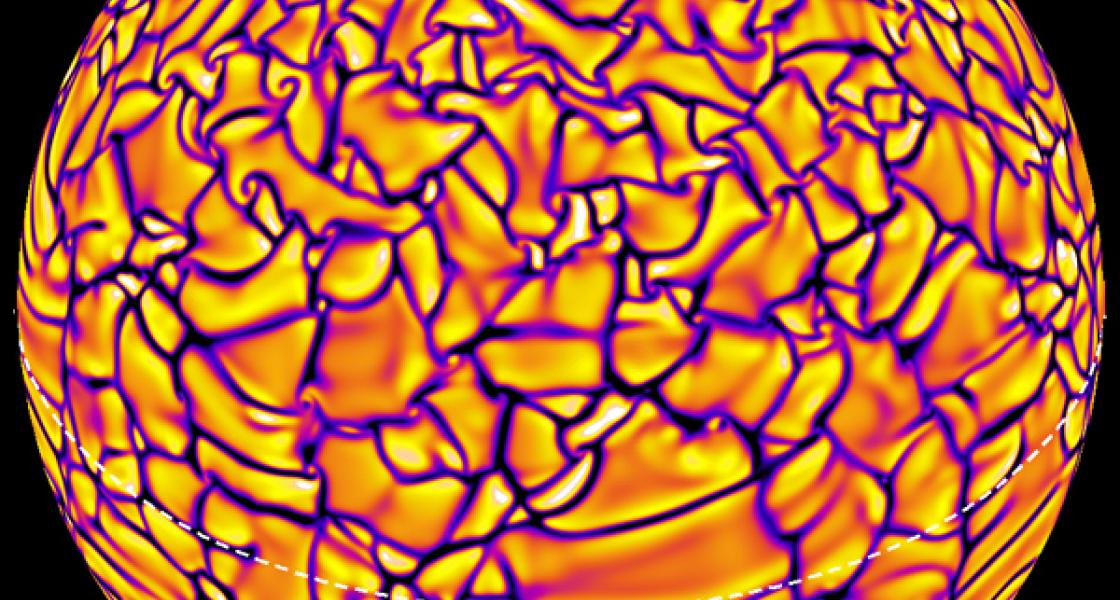Juri Toomre and his group concentrate their stellar research close to home – just 93 million miles away, to be precise. They want to answer the question: What dynamic processes occur deep within the Sun? To find out, they use a powerful combination of computer simulations and helioseismology (which analyzes sound waves produced by the Sun to probe its internal structure.) The researchers believe that working out the details of the Sun's internal structure should lead to explanations for the 22-year sunspot cycle and other regular surface features such as the Sun's consistent, but variable, rotation rate.
Toomre's group has conducted detailed investigations of the turbulent convective layer beneath the Sun's surface (a simulation of which is shown at right). The group has shown that the convective layer, which comprises the top 30% of the Sun, exhibits weather patterns such as strong winds, jets, and tornadoes. This layer interacts with the tachocline, an area of rapid change between it and the (relatively) quieter radiative interior. This interaction causes the formation of magnetic structures that influence sunspot behavior, flares, and other observable surface phenomena.
Toomre, and former JILAns Mark Miesch and Sacha Brun recently turned their attention to the Sun's rotation. (Miesch is with NCAR's High Altitute Observatory, and Brun is with the Service d'Astrophysique of the French Center for Atomic Research.) The Sun's equatorial regions rotate with a period of about 27 days. In contrast, the poles rotate with a period of about 35 days. Strikingly, the nonuniform rotation extends down through the convection zone but does not occur in the radiative interior, which rotates uniformly.
The researchers modified their computer simulation of the convective layer by adding a small temperature contrast of 10 K in the tachocline between the cooler equator and the slightly warmer poles. This small change resulted in a simulation that more closely mirrored the solar rotation pattern observed via helioseismology. It also underscored the importance of the interaction between the tachocline and the convective layer in influencing the Sun's dynamical behavior.
The research presented here appeared in the April 10, 2006, issue of The Astrophysical Journal. - Julie Phillips




